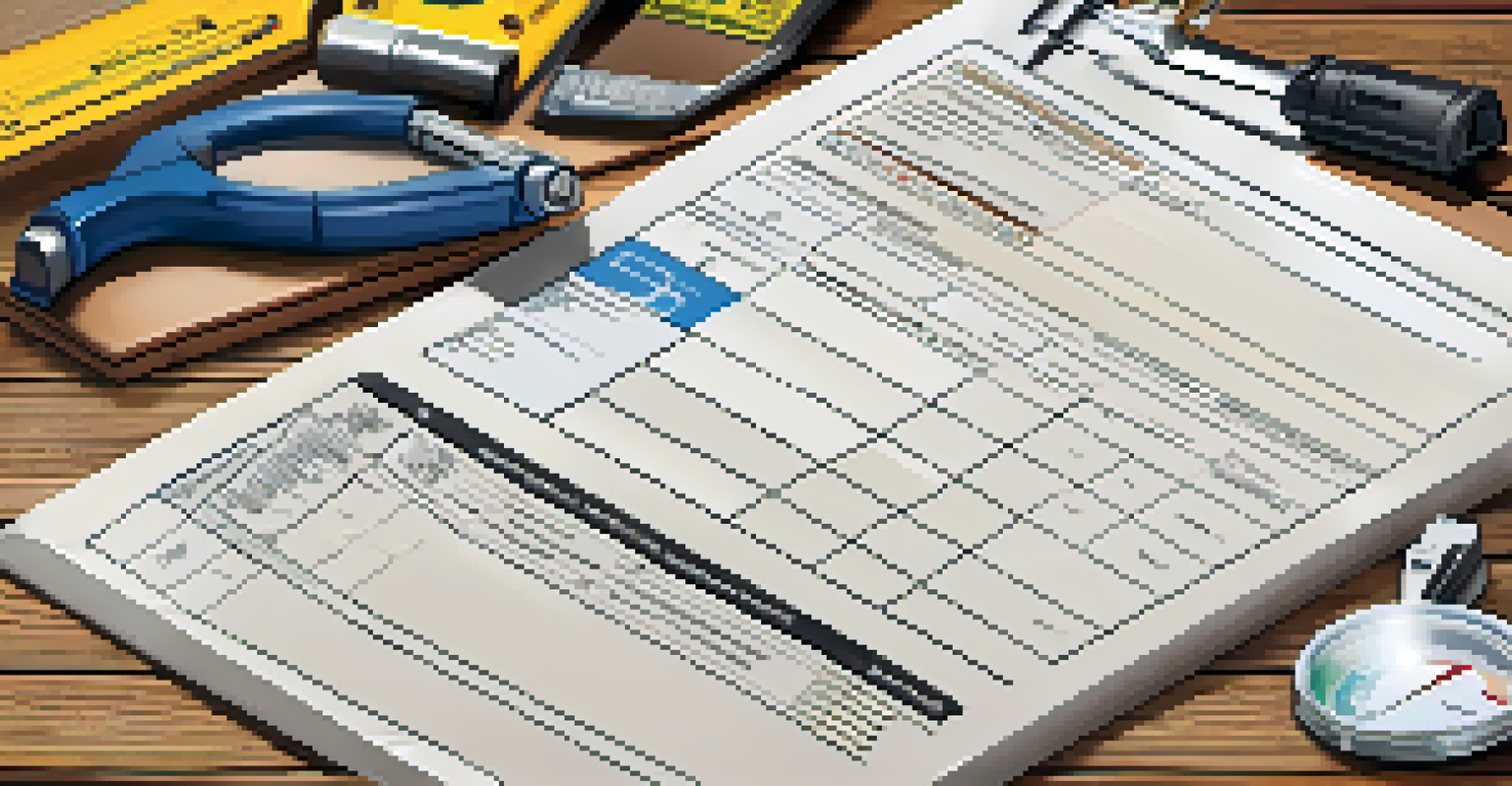Understanding Home Inspection Checklists

What is a Home Inspection Checklist and Why is it Important?
A home inspection checklist is a detailed guide used by inspectors to assess the condition of a property. It outlines critical areas to evaluate, ensuring nothing is overlooked during the inspection process. This checklist serves as a roadmap for both buyers and sellers, highlighting potential issues that could impact the property's value and safety.
An investment in knowledge always pays the best interest.
For home buyers, having a checklist means being informed about the property's condition before making a significant investment. It helps identify areas that might need repairs or renovations, allowing for better negotiation leverage. Sellers can also benefit by using the checklist to prepare their homes, addressing issues before potential buyers arrive.
Ultimately, a thorough home inspection checklist provides peace of mind, helping buyers feel confident in their purchase. It can also prevent future headaches by uncovering problems that might not be immediately visible. Understanding its importance is a crucial step in the home buying journey.
Key Components of a Home Inspection Checklist
Typically, a home inspection checklist covers various aspects of a property, including the roof, foundation, plumbing, electrical systems, and more. Each component is examined for signs of wear, damage, or potential safety hazards. For example, checking the roof for missing shingles or leaks is vital to ensure the home is protected from the elements.

Inspectors also assess the interior spaces, looking at walls, floors, and ceilings for signs of water damage or cracks. Appliances and fixtures should also be tested to ensure they are functioning properly. This thorough examination helps buyers understand the full scope of the home’s condition.
Home Inspection Checklist Benefits
A home inspection checklist helps buyers and sellers identify crucial property issues, ultimately aiding negotiations and ensuring informed decisions.
Moreover, having a detailed checklist allows for a systematic approach to inspections. It ensures that no area is neglected, providing a comprehensive overview of the home’s strengths and weaknesses. This clarity is invaluable for making informed decisions.
How to Create Your Own Home Inspection Checklist
Creating a home inspection checklist can be a straightforward process with the right guidance. Start by identifying the key areas you want to inspect, including the roof, foundation, plumbing, electrical, HVAC systems, and interior condition. You can find templates online or use resources from real estate websites to help structure your checklist.
The bitterness of poor quality remains long after the sweetness of low price is forgotten.
As you develop your checklist, be specific about what you want to look for in each area. For instance, under plumbing, you might include checking for leaks, water pressure, and the condition of fixtures. This level of detail will ensure a comprehensive inspection and help you identify any issues early.
Don't forget to include space for notes and photos, as documenting your findings can be beneficial later. This personalized checklist can be a valuable tool whether you're a buyer looking to inspect a potential purchase or a seller preparing for an open house.
Common Issues Found in Home Inspections
During home inspections, several common issues tend to crop up that can surprise buyers. One frequent problem is inadequate drainage around the foundation, which can lead to water intrusion and structural issues. Inspectors often recommend proper grading and drainage solutions to mitigate these risks.
Another typical concern is outdated or faulty electrical systems. Buyers may find that the wiring does not meet current safety standards, which could lead to potential fire hazards. Addressing these electrical issues beforehand can save a lot of trouble down the road.
Key Components to Inspect
Essential areas like the roof, plumbing, and electrical systems must be thoroughly examined to uncover potential safety hazards and maintenance needs.
Lastly, roof damage is a prevalent finding. Whether it's missing shingles or signs of leaks, roof issues can lead to significant repair costs if not addressed promptly. Being aware of these common pitfalls can help buyers prepare for negotiations and future upkeep.
How to Interpret Your Home Inspection Report
Once the home inspection is complete, you'll receive a detailed report outlining the inspector's findings. It can be overwhelming at first, especially with all the technical terms and jargon. However, understanding how to interpret this report is key to making informed decisions about your property.
Start by looking for the summary or key findings section, which highlights the most critical issues. This part usually categorizes problems by severity, such as 'immediate attention needed' or 'monitor for future concerns.' Knowing the urgency of each issue can help prioritize repairs and maintenance.
Don't hesitate to ask your inspector for clarification on any points you find confusing. They can help explain the implications of the findings and suggest suitable next steps. This dialogue ensures you're fully informed and ready to take action.
Negotiating Repairs After the Inspection
Once you have the inspection report, the next step often involves negotiations with the seller regarding repairs. It's essential to approach this process thoughtfully, as it can significantly impact your home purchase. Start by determining which issues are deal-breakers and which ones you are willing to address yourself.
Present your findings to the seller in a clear and professional manner. Highlight the critical repairs needed and back your requests with evidence from the inspection report. This approach shows that you're serious about the issues but also respectful of the seller's position.
Importance of Follow-Up Inspections
Conducting follow-up inspections confirms that necessary repairs have been completed, ensuring peace of mind and safety before moving in.
Remember, negotiations are about finding a middle ground. Be prepared to compromise, whether that means adjusting the sale price or agreeing to have certain repairs completed before closing. A positive negotiation experience can help foster a good relationship between you and the seller.
The Importance of Follow-Up Inspections
After addressing any issues found during the initial inspection, a follow-up inspection can be a wise move. This second inspection ensures that all necessary repairs have been completed to your satisfaction. It's especially important for significant issues, like structural repairs or electrical updates, where safety is a concern.
Follow-up inspections can also provide peace of mind, confirming that the home is in the condition promised by the seller. They can help prevent any unpleasant surprises after moving in, allowing you to settle into your new home comfortably. Knowing that everything is up to standard can enhance your overall home-buying experience.

Moreover, some buyers even negotiate for a follow-up inspection as part of their purchase agreement. This proactive approach demonstrates a commitment to ensuring the home’s safety and longevity, making it a worthwhile consideration in your home-buying journey.